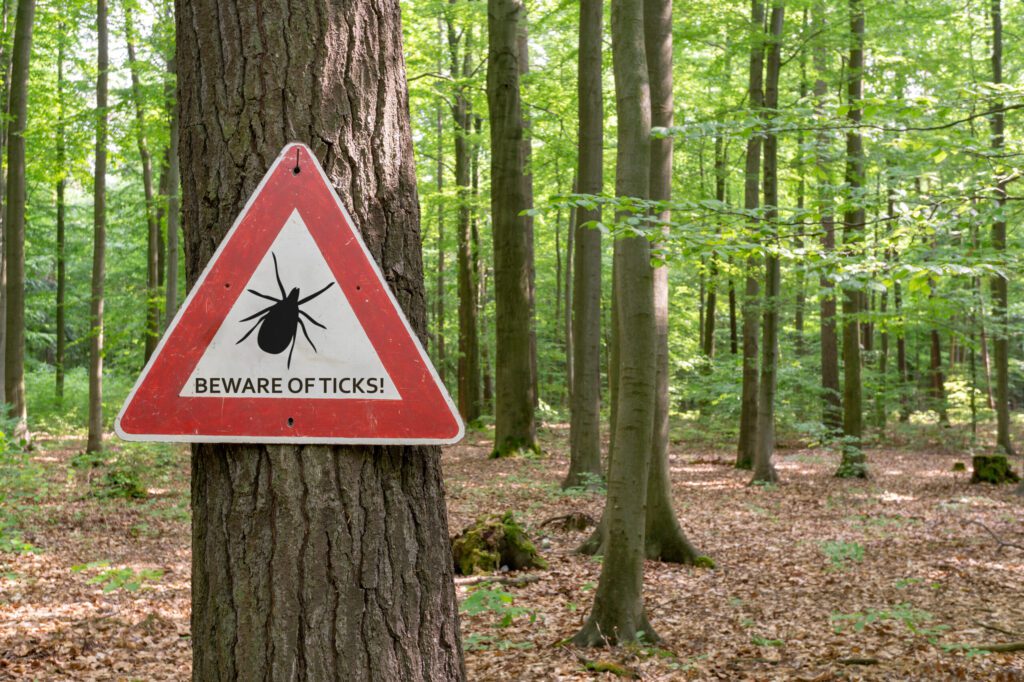Learn How to Protect Yourself From Lyme Disease
by TIM CRAIG
May is Lyme Disease Awareness Month, and as the warmer weather brings more family trips outdoors, now is a good time to be reminded about this tricky disease and how to protect yourself against it.
Lyme disease is one of the most common diseases that come from infected tick bites in Florida. According to the CDC, Florida had 98 confirmed cases and 71 probable cases of Lyme disease in 2018, the most recent year data is available. While that may seem low — Pennsylvania led the nation with 7,920 cases in 2018 — that doesn’t make Lyme disease any less dangerous, and may make it more dangerous for those who are infected, according to Melissa Bell, president of the Florida Lyme Disease Association in Jacksonville Beach.
Bell started the FLDA in 2013 after seeing Lyme disease cases slip through the system because of what her organization calls “poor awareness, flawed treatments and faulty testing.” In 2012, Bell and members of her family — including the family dog — suffered from Lyme disease. For Bell personally, the effects from the undiagnosed disease affected multiple systems in her body, including an irregular heart rhythm. She said she still suffers from headaches and brain fog as a long-lasting effect of the disease.
“For our family, we traveled out of state and around the country in search of answers that we didn’t get at home,” she says. “Most of that cost came out of pocket.”
Bell started the organization, which merged with the Northeast Florida Lyme Association in 2014, as a way to expand the organization’s reach and advocate for others who are facing the same issues, particularly children.
“When this came to our family in 2012, I thought I could go online and research this for a couple hours and understand this disease,” she says. “It’s 2021, and I’m still researching this extremely complex disease.”
Some of that advocacy may be paying off. In July 2019, the FDA cleared several new Lyme disease serologic assays, antibody tests that may help diagnose and track the disease.
While new tests may help diagnose and track the disease, prevention and awareness are the keys to avoid complications later on.
Prevention
The life cycle of the tick begins in the Spring, usually March. The larvae and nymphs feed on rodents, which is typically when the tick becomes infected with the bacteria that causes Lyme disease. The nymphs and adult ticks feed on larger animals, including humans. Studies show that most humans are infected through the bites of nymphs and both nymphs and adults need to be attached for more than 24 hours to effectively transmit the infection. This leads to the first tip on avoiding tick bites: regularly perform tick checks on yourself, your family and pets during the spring and summer months. Other tips include:
- Keep grass, shrubs, and trees close to your residence trimmed
- Use a repellant that contains 20 to 30 percent DEET
- Apply the insecticide permethrin to clothing and gear
- If walking along paths and trails, try to remain in the center and avoid low-hanging branches
- Shower soon after being in a tick habitat
- Use veterinarian-recommended products to keep ticks off pets.
Tick Removal
If you find a tick during a tick check, take great care during its removal. Do not, according to CDC guidelines, use nail polish, petroleum jelly or a hot match to make the tick detach. That could cause the tick to stress and secrete more of its poison into the bite.
Instead, follow these three steps:
- Use fine-tipped tweezers to grasp the tick as close to the skin’s surface as possible
- Pull upward with steady, even pressure to remove the tick — avoid twisting or jerking
- Clean the bite area and your hands with rubbing alcohol or soap and water
- If tick mouthparts remain in the skin, leave them alone. In most cases, they will fall out in a few days.
Symptoms and Signs
Between 60 percent and 80 percent of people bitten by an infected tick will develop a red “bull’s eye” rash (erythema migrans, or EM), which does not always appear at the site of the bite. On average, the bull’s eye will appear about seven days after infection. Other early-stage symptoms that can appear between three and 30 days after being bitten include fever, headache, chills, fatigue, stiff neck or muscle aches.
Later stage symptoms may not appear until months after the bite. These may include:
- additional EM rashes on other areas of the body
- severe headaches and neck stiffness
- facial palsy, which is the loss of muscle tone or a droop on one or both sides of the face
- arthritis with severe joint pain and swelling in the knees or other large joints, with intermittent pain in the tendons, muscles, joints and bones
- Heart palpitations or an irregular heartbeat
- Episodes of dizziness or shortness of breath
According to the Florida Department of Health, patients treated with antibiotics without a prescription early after infection usually recover quickly and completely. Those who are diagnosed in later stages may have persistent or recurrent symptoms, requiring a second course of antibiotic therapy.
